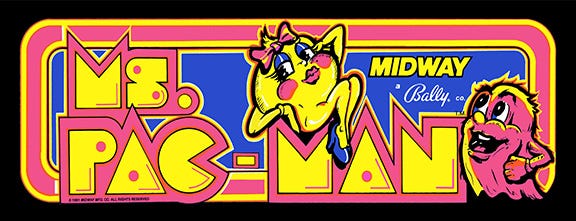Steve Golson Interview: The Story of Ms. Pac-Man, the Atari 7800, and the Hyperdrive
The tale of how a group of MIT dropouts got sued by Atari, created the best-selling American arcade game of all time, and annoyed Steve Jobs with a fan.
This article first appeared on USgamer, a partner publication of VG247. Some content, such as this article, has been migrated to VG247 for posterity after USgamer's closure - but it has not been edited or further vetted by the VG247 team.

Steve Golson is a video game pioneer whose credits include Ms. Pac-Man, Food Fight, and the graphics chips for the Atari 7800 Pro System. As part of General Computer Corporation, he worked on early coin-op enhancement kits, add-ons that were designed to plug into existing arcade machines to make them more challenging, thus preventing gamers from being able to play for hours at a time on a single quarter.
USgamer: How did your career get started?
Steve Golson: The first product I worked on was the Super Missile Attack enhancement kit for Atari's Missile Command. I'd done hardware design in some of my class work, but not so much software because I wasn't in Course Six at MIT, which was Computer Science – I was an Earth Science guy. So when General Computer Corporation first started up to create the Super Missile Attack enhancement kit, the handful of guys all had software experience, and I had hardware experience. They said, "that's great – we need the hardware too, and you'll pick it up as you go along," and that was my first exposure to it – programming the embedded microprocessors inside video games.
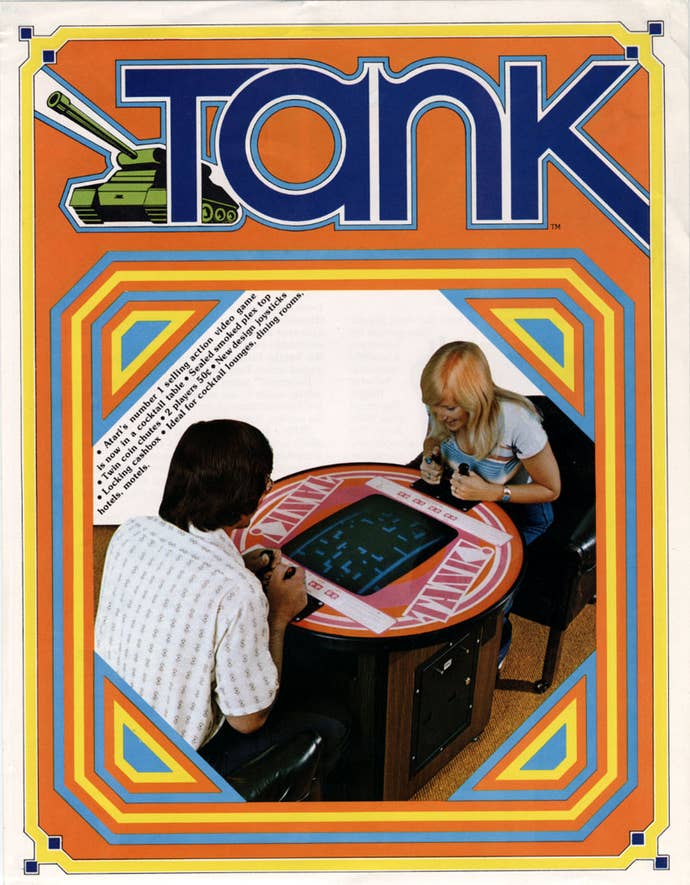
USG: Were you playing games at the time?
SG: Yes. Even before General Computer started up. It was the dawn of arcade games, and I remember playing Tank, one of the very first arcade games, at MIT in the bowling alley, of all places. That was probably 1976. I recall playing that game and going to pinball arcades at that time, and playing very early coin-ops.
USG: Did games pique your interest in terms of a potential career?
SG: Not really. It was more an opportunity with Doug Macrae and Kevin Curran to do something that looked like fun. My background was more on the hardware side, and that's what I gravitated towards. I'd been helping Doug and Kevin do maintenance on their arcade games, because they were running them in the MIT dormitories at the time, and had been doing that for several years. I was using my hardware knowledge to help them out a bit. When GCC started up, my hardware background was a great benefit. We were going to design a board that was going to do address decoding and decide which ROMs to use, and I was all for that. My interest was looking at the game from a hardware perspective, which was really useful for the reverse engineering, because we needed to understand how it worked, and how we'd interact our own code with the graphics hardware. There was no manual to tell you anything – you had to look at the schematics. Back then Atari was nice enough to annotate their schematics to explain the theory of operation, which made it a little easier for us to figure out what was going on.
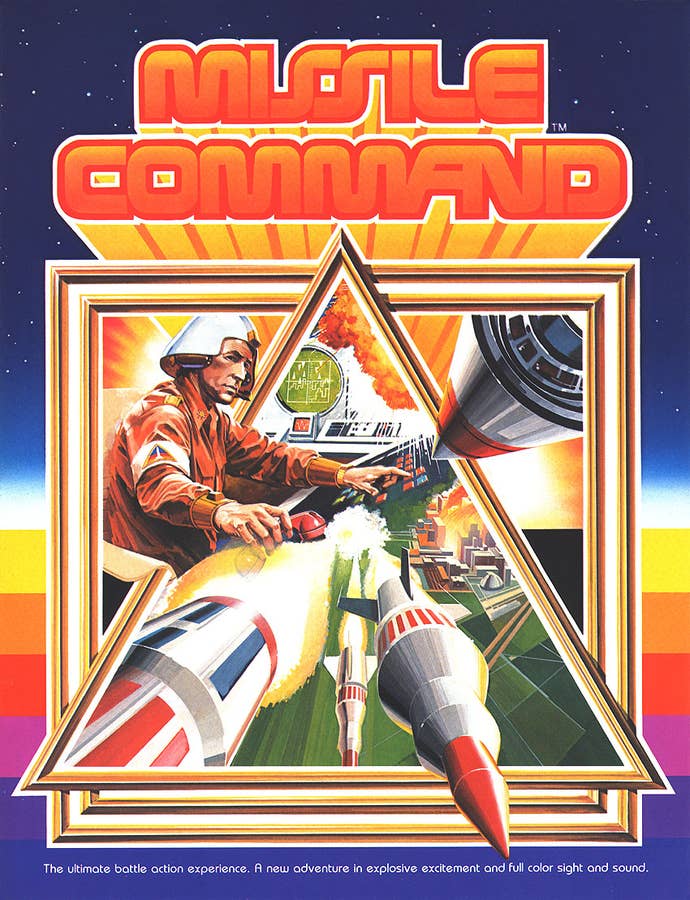
USG: How challenging was it to reverse engineer the Missile Command code?
SG: You could look at the code and do a disassembly of it. There's no higher-level language, so once you got it to assembler code, that was pretty much the source. Then you could start figuring out what things do by erasing routines and seeing what happened. Like erasing a routine and then seeing that the game no longer draws the explosion cloud in Missile Command. That must be the routine that draws the explosion cloud! So, it was figuring that out. Playing little games with the code that the emulator system allowed you to do. It allowed you to put in patches and make changes, and figure out what was happening. We basically captured the Missile Command code, annotated it with descriptions of what did what, and what memory location did what, and the more we figured stuff out, the easier it became to work out what was going on. It was a real puzzle, and I think it fit our mindset as MIT students, which is being given a challenge, solve the problem set.
USG: How did you emulate the Missile Command game?
SG: The way it worked is that you took an existing Missile Command arcade game, and we had this GenRad Microprocessor Emulator system that was designed to be used by people who are creating embedded products, which was the phrase back then. If you were designing a game from scratch, this is how you'd do it. You unplug the microprocessor from the game board, and you plug in this circuit that is connected to your development system, and so it now thinks it’s the microprocessor. And so you can now execute that, or single-step it, or stop and tell it to instead fetch the code from the board, fetch it from the internal memory of the development system. So you could do that on a byte-by-byte basis almost, modify the code and see what happens. It was all because of this emulation system that allowed us to do the development that we did.
USG: How did you afford to buy that system as students?
SG: Well, it cost about $25,000, and it was a loan from Doug Macrae's Mom. It was a good investment on her part – within two months we'd netted about $250,000 through sales of the Super Missile Attack kit.
USG: Did you expect to make that much money?
SG: Not really. It was something that there was clearly a need for. Doug and Kevin, effectively as arcade owners themselves, really wanted this product. And they were calling the various companies who were making these enhancement kits, and nobody was able to do it. There was actually one, and it was this horrendously awful circuit board. They'd determined which memory location had the number of lives – cities – that you had, and they watched that to make some basic changes to the code. It was a very crude thing.
And so we knew we were operating at a more sophisticated level than anyone else in the industry trying to create these products. And it was fun. It was games! It was just a cool thing to be doing. And it turned out to be more successful than we imagined.
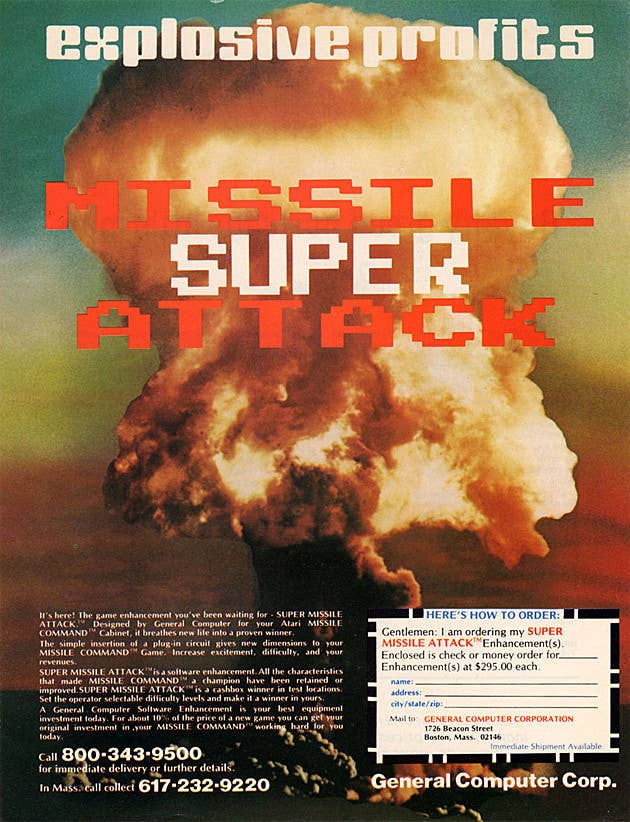
USG: Then Atari came along and took you to court over the Super Missile Attack enhancement kit?
SG: We actually sued them first. We knew they were about to sue us. People in the industry had told us that they'd been hearing this, so we had counsel by then. And we thought that if we sued them first, we could at least control where the lawsuit happened. They could sue us anywhere we'd sold Super Missile Attack – and if that happened in California, that would be a pain for us because we'd have to travel all the way from Massachusetts. So let's sue them for declaratory judgment – that what we're doing is legal, and we can do that in a Massachusetts courtroom, so at least we don't have to travel. So that was the very first thing, and Atari's lawsuit immediately came in and they got combined into one action.
But the upshot is that they came in and said that we were doing all these bad things, and we said that we weren't, and that we'd carefully designed everything to ensure that we weren't infringing on their intellectual property. And they came back and said things like, "people walk up to the game and the side of the cabinet still looks like Missile Command". So we said, "okay, we'll ship the kit with stickers that cover the side of the cabinet."
And then Atari was annoyed that Super Missile Attack still said copyright Atari, and we said of course it does because 90% of it is still your code, so it says copyright Atari, and copyright General Computer. They wanted us to take that out, so we came up with a second version of the enhancement during litigation and presented that to the court. Then they complained about the font – which was a generic font 5 x 7 pixel font, but they claimed that people think that's indicative of Atari, and we said could change that too.
USG: So you were quite slippery, and were staying one step ahead of them by responding to their complaints?
SG: Slippery isn't the word I'd use. [Laughs] Clever perhaps? I'll tell you this story. We were in court, and it was a Friday. The judge very specifically wrote a restraining order that prevented us from continuing to sell the Super Missile Attack kit. And we said, "Your Honor, we might change it." And so he wrote that the current version can't be sold, but if a new version is made, he'll take a look at it. We were like, "It's Friday, and we'll have a new version by Monday." It actually took a week, but we addressed all the issues that Atari brought up, but that wasn't enough to satisfy them. As we got further into the lawsuit, we got into discovery, where we got to depose their engineers and their people, and that became a lot of trouble for them and they didn't like it. And their attorneys had to point out that Atari sued us, and they had to turn up for these depositions. Eventually, at one of these depositions, Skip Paul, who was the attorney at Warner Communications – they owned Atari at the time and had gotten involved – asked Kevin Curran what do you guys want to do, and why were we doing this?
I think Atari thought, here's this handful of MIT dropouts. The fear of Atari taking us to court was going to make us crumple up and die, and we were going to stop. But to us it was an adventure. We had nothing for them to take. You cannot come after us individually, but have to instead go after a company with no assets. To us, that was fun. We get to go to court, and we made life annoying for Atari.
Anyway, Kevin told Skip that we just wanted to make these enhancement kits, and sell enough kits so we can eventually design full games. So Skip asked, "why not do that for us?" And we said, "well okay, let's have that conversation." So Atari dropped the lawsuit, and off we went. We signed a deal with them to make games, and we were very happy about that.
Before the lawsuit happened, we had already had conversations with people from other companies in the industry. Gottlieb, if I recall, came in and was talking to us about whether we could do work for them. So we were busy talking to people and looking for more work to do, but once the lawsuit happened, everyone stopped talking to us, thinking that we would go under. Didn't happen.
It was a phenomenal thing to have the manufacturing and the marketing might of Atari behind us, and all we had to do was the engineering. That was awesome for us to stay away from the sales, marketing and manufacturing, and just make games.
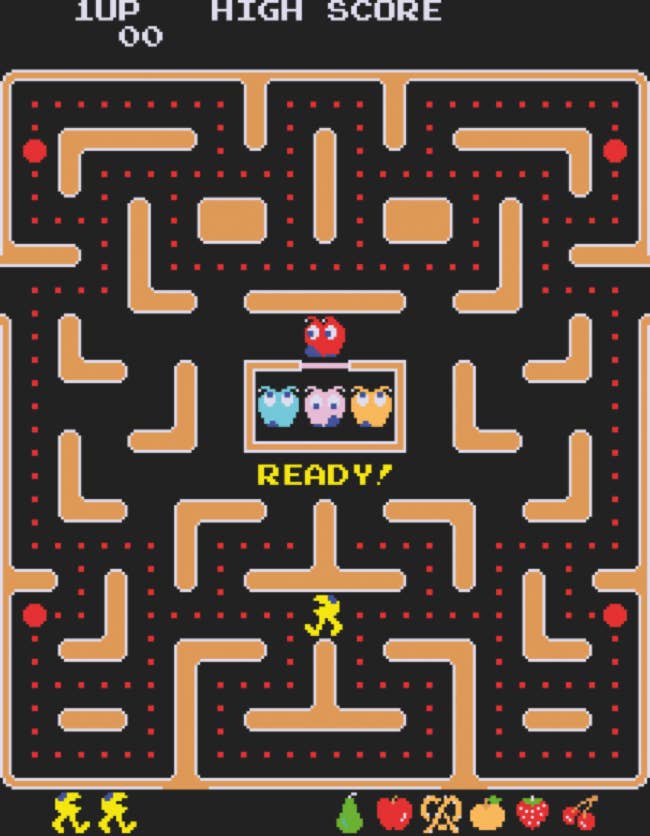
USG: When did you start work on Crazy Otto – the Pac-Man enhancement kit?
SG: We started working on it before the lawsuit in mid-June 1981. We got a Tectronics emulator at that point, and immediately started working on the Pac-Man kit, and we worked on it for six weeks before the lawsuit happened. During that time we were also making Super Missile Attack kits in the basement and shipping those off, while also working on the new Pac-Man kit.
After that point we were split between supporting the litigation and coming up with new versions of Super Missile Attack, and continuing to work on the Pac-Man kit. Plus we were taking irate phone calls from angry arcade owners who wanted to buy the Super Missile Attack kit, but couldn't because we were under a restraining order. They'd get livid, and we'd tell them to call Vice President so-and-so at Atari and tell him how displeased you are.
You have to remember that Atari had recently come out with their home gaming system, and they were running this advertising campaign saying "why waste a quarter in the arcade, when you can play these games at home" – and they were converting arcade machines for use on their home system. That was a PR nightmare with arcade owners, who were really ticked off by that. It was yet another reason why Atari wanted to settle.

USG: So how did Crazy Otto turn into Ms. Pac-Man?
SG: Originally, we were going to sell it as a kit without any input from Midway. We were going to sell it directly to arcade owners like we did with Super Missile Attack. So we made the kit, which changed the name of the game, changed the characters and everything about the game: New mazes, colors, sound, everything. However, we ended up showing it to Midway as a kit, thinking that Midway might buy it from us to sell to their existing base of Pac-Man arcade owners. But they immediately jumped on it and said, "Wow! Let's make this a new game." They were looking to continue their production line, which they were just shutting down. They'd just built 110,000 Pac-Man cabinets in one year. They ramped up production to do this, and it was all going to go away because they didn't have a new game. They kept imploring Namco – where's your next big game? But they didn't have anything, and Midway was desperate. We didn't know this, but we came in as saviors with a new game that they could build – and it's almost identical to Pac-Man. So they could just start up the production line again. So Midway was hugely behind it. They liked the gameplay of Crazy Otto, and it did very well when it went out on test, and their own in-house testers loved it.
It was a very good moment – Midway was very much behind us in whatever negotiations they had to do with Namco to make it happen. And frankly, I think Namco didn't care – as long as they continued to get their royalties as if it was a Pac-Man cabinet.
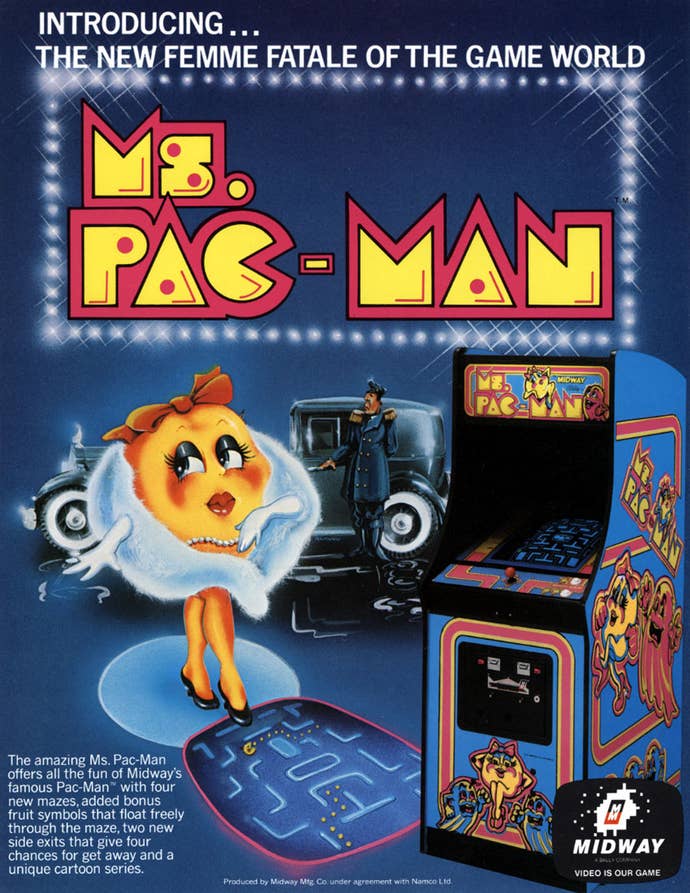
USG: With Crazy Otto, you changed the original Pac-Man maze and the characters. You also changed the AI.
SG: One of the biggest things we wanted to change with the Pac-Man enhancement kit was the difficulty of the original game. The problem was that people were playing the game for too long. The whole point of an arcade game is that you drop a quarter in, and you play for two or three minutes and you put in another quarter. That's the business model for the arcade owner. As people learn to beat the game, they're learning to beat the software. There's nothing mechanically wrong with the cabinet or the switches or the display. So our job as an enhancement designer was what little things can we change to make the game better, harder, and more challenging. In fact, the players like it too. Turns out they get bored of the game – once they've learned all the patterns, there's nothing else to do.
The obvious problem with Pac-Man was the predictability. People understood that it was going to play the same way every time, so what could we do to change that? The Z80 microprocessor had this free-running counter inside of it called the refresh register, because it was designed to be used for D-RAM refresh. But you could access it from software and read the value of that counter, so essentially it's a random number generator. And we thought how could we use that to add randomness to the game. Looking at the existing AI of the monsters, and realizing that there's this one mode they're in where they run to a fixed spot in the maze that's predefined. So why not have them head to a random location? That was the key to changing the monster AI. It was enough, particularly at the lower levels, because they're in that mode quite often, and it changes their behavior enough to totally throw off their patterns. The monsters are still a little bit predictable in their behavior, particularly when they're chasing you, because we didn't change that at all, so they'll chase you in the same way, but it screwed it enough so patterns wouldn't work any more.
The kit also got rid of the original maze, and featured four new ones. You think you've figured out that first maze? Great. Because after two levels, guess what? There's another maze. Then there's a third maze, and then a fourth maze. Four seemed like enough. If you're playing up at that level, you're a really good player. The game ends up recycling the third and fourth mazes over and over. So all of those things make it a new playing experience every time you drop in a quarter.
USG: Was Namco happy with the results?
SG: That's hard to say. I think in a way Namco was happy because they made money off it. On the other hand, they're probably unhappy in the sense that you often hear from people that Ms. Pac-Man is the better game, and they had nothing to do with its development. Well, actually they had a lot to do with it. The idea of a maze game and the dots and the chasing and the energizer, we didn't change any of that. That was Iwatani-san and the Namco people. We took what we could see were fairly obvious flaws and shortcomings in the game and changed them a little bit, and players loved it.
